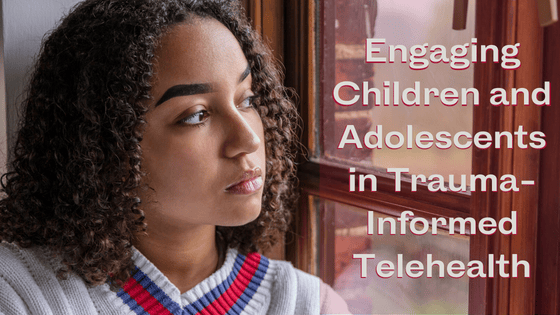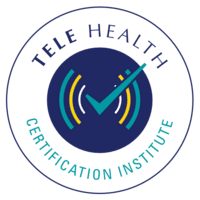“Without some degree of regulation, it is difficult to connect with another person, and without connection, there is minimal reasoning. Regulate, relate, then reason.”
-(Perry & Winfrey, 2021; What Happened to You?)
One of the principles of a Trauma-Informed System (TIS) is Understanding Stress and Trauma (see here for a list of TIS principles). As clinicians, when we can understand the trauma and stress of our child and adolescent clients, we are more likely to act compassionately and take well-informed steps toward promoting our clients’ wellness. Our children and youth are more stressed than ever in the context of increases in certain mental health symptoms, including depressive symptoms and suicidal ideation; and increased psychological distress as a long-term impact of the COVID-19 crisis (see the U.S. Surgeon General’s Advisory here and the most recent CDC Youth report here).
A trauma-informed approach in working with children and adolescents involves an understanding that heading straight for the 'reasoning' part of the brain with an expectation of learning and change, will not work so well if the child or adolescent is dysregulated and disconnected from others. According to Perry’s (2003) Three R’s Model, trauma repair can happen using a bottoms-up approach where interventions are organized in the order in which the brain injury needs to heal: Regulate first, then Relate, then Reason. We can adopt this trauma-informed model and its principles in the way we conduct telehealth with our children and adolescent clients. You will find in the table some best practice guidelines and examples of tele-adapted tools and interventions that can help clients in regulating their bodies and emotions; relating better with significant persons; and reasoning and thinking through one’s behavioral and emotional difficulties.
Regulate | Relate | Reason |
*Engage child or adolescent clients in somatic management interventions such as breathing retraining; progressive muscle relaxation; visualization and imagery; grounding exercises; movement; mindfulness. *Integrate multiple breaks during a telehealth session using movement, going outside, breathing, mindfulness, etc. *Establish rituals at the beginning and ending (e.g., feelings chart, playlist song, mindfulness activity, story). *Work with parents and caregivers to reinforce ‘regulation’ skills at home.
Some telehealth tools:
| *Prepare your virtual space to facilitate and strengthen therapeutic alliance. Work with parents/caregivers to set up a space at home
*Integrate non-verbal expressive arts therapy interventions into your telehealth work with children and adolescents. This can include art therapy, play therapy, sandtray therapy, music therapy, puppet play therapy, and others. Some telehealth tools:
| *Engage child and adolescent clients in interventions that appeal to reason through the use of ‘talk’ therapy, CBT-informed therapies, narrative therapy, and insight-oriented therapies. *This can include the use of digital therapeutic worksheets (e.g., CBT thought records) and mental health apps. *The use of bibliotherapy can also be a therapeutic way of using particular stories as a catalyst for discussion and resolution of difficulties with children and adolescents.
Some telehealth tools:
|
**********
We welcome guest columnist Dr. Ritchie Rubio. Dr. Rubio is the instructor for numerous courses for TCI, including using telehealth with children, adolescents, BIPOC communities, and trauma-informed play therapy.
About Ritchie Rubio Ph.D. Clinical Psychologist:
Dr. Rubio works as a clinical child psychologist, play and expressive arts therapist, researcher-storyteller, program evaluator, statistical consultant, data analyst, telehealth trainer/consultant, and associate professor/lecturer in a variety of clinical and academic settings including public health systems, universities, pediatric hospitals, community mental health settings, schools, and research institutes in three countries: the Philippines, U.S.A., and New Zealand. He moved from the Philippines at the age of 25, completed his Ph.D. in Clinical Psychology with a Child and Family emphasis from the California School of Professional Psychology (CSPP) through a Ford Foundation International Fellowship Program (IFP) grant. He is currently the Director of Practice Improvement and Analytics of the Children, Youth, and Families System of Care (CYF-SOC) Behavioral Health Services (BHS) at the San Francisco Department of Public Health in California, USA. In that role, he plans and coordinates a clinical practice improvement and evaluation program focused on identifying best trauma-informed and diversity-responsive practices; and utilizing implementation science to design and strengthen clinical assessment and interventions. He is also an adjunct Associate Professor at the Counseling Psychology programs of the University of San Francisco and the Berkeley Wright Institute. He teaches courses such as Research and Statistics; Crisis and Trauma Counseling; Neuroscience; Child and Adolescent Counseling; Family Violence and Protection; Individual, and Family Development; and Clinical Assessment and Measures. His clinical work was/is primarily with immigrant and multicultural children/youth and their families. He mostly integrates psychodynamic, attachment, family systems, multicultural, expressive arts, play therapy, and CBT orientations.




The course was so informative and I was glued to my screen for the entire duration. I received so much knowledge concerning ethics in telehealth and I am greatly encouraged to read about all the standards and policies that pertain to my practice. Thank you!.